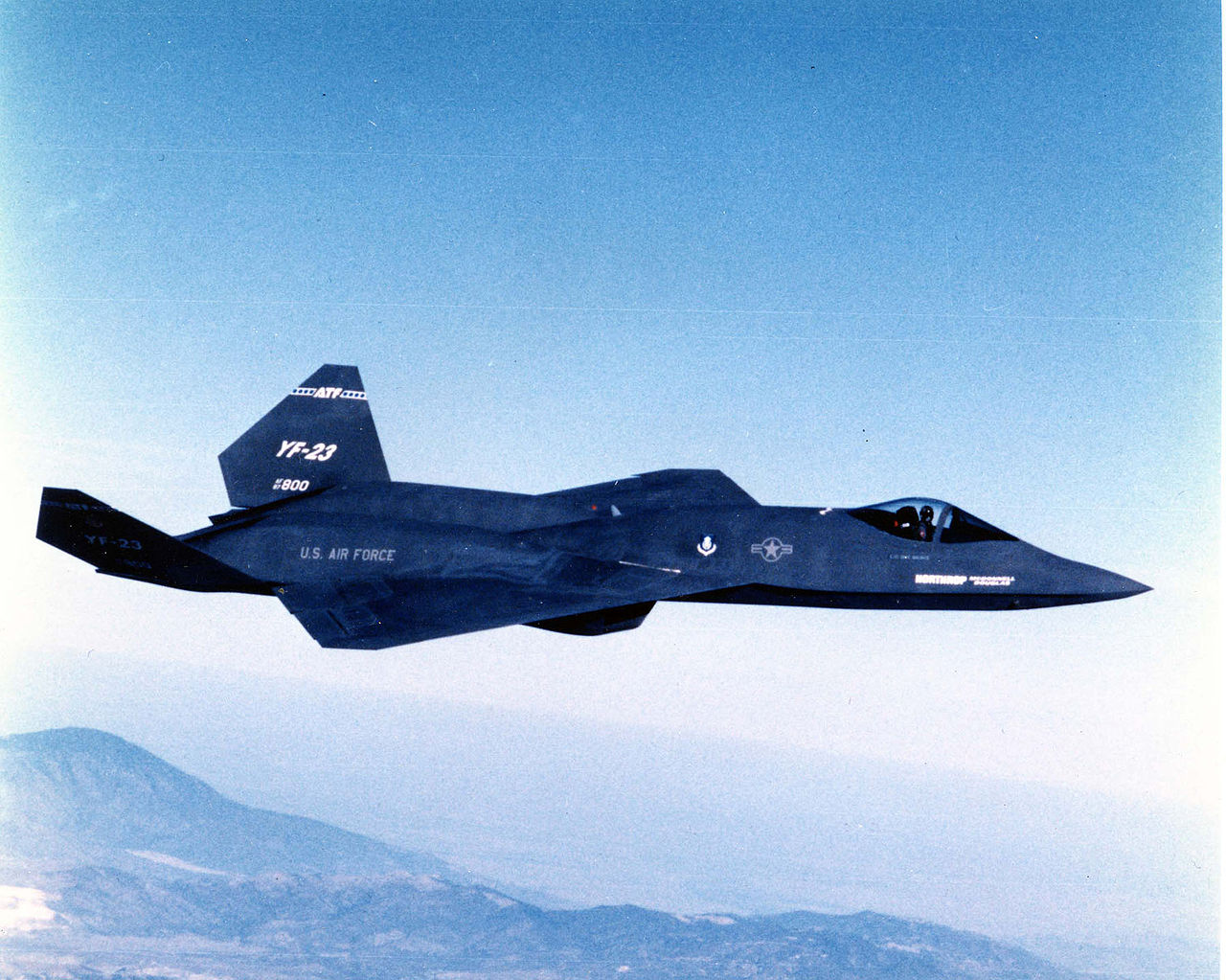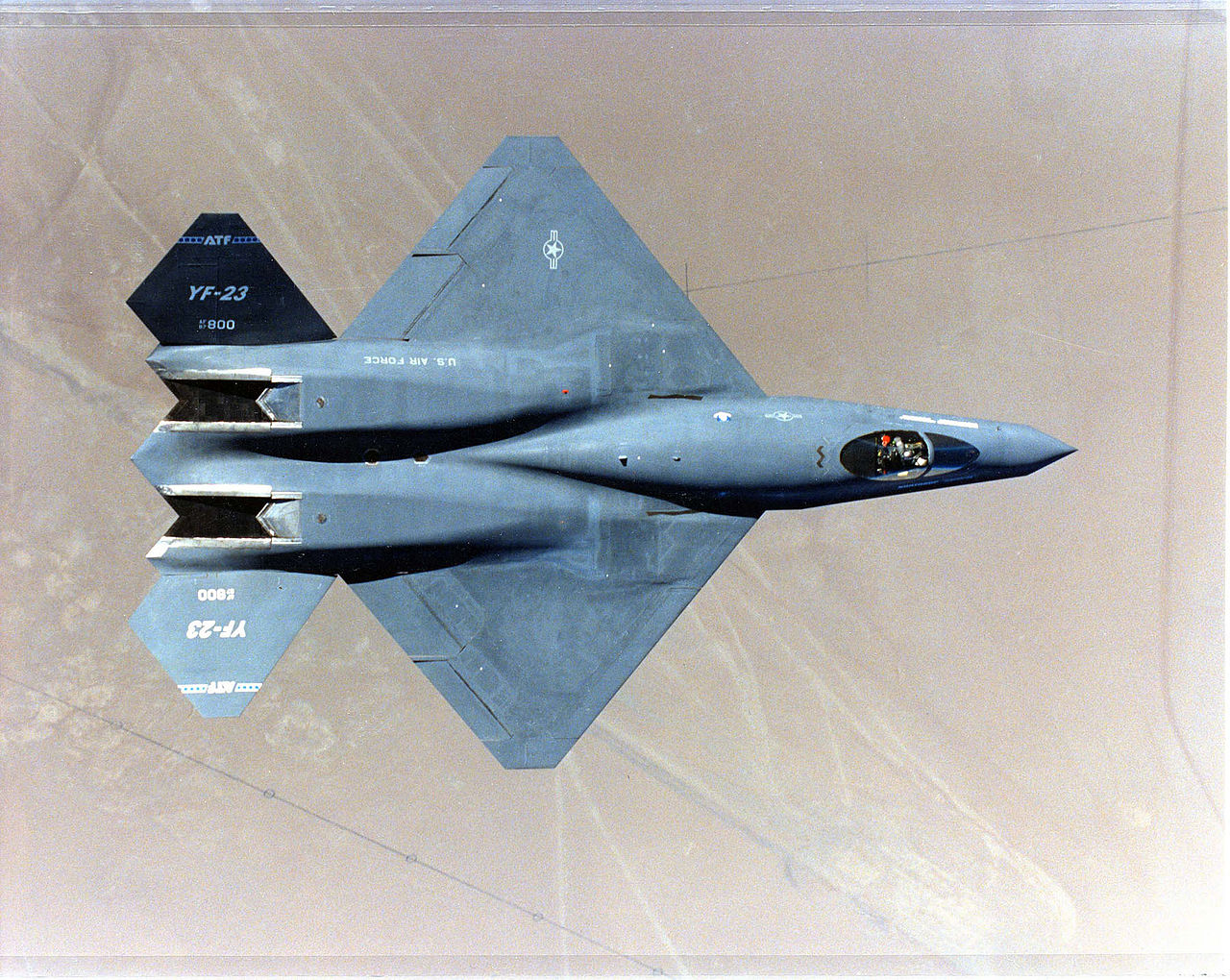Some Say The YF-23 Was Better Than the YF-22. Who’s Right?
The Northrop / McDonnell Douglas YF-23 was Northrop and McDonnell Douglas’ response to a United States Air Force (USAF) request for an advanced tactical fighter (ATF) to counter the newest Mikoyan-Gurevich MiG-29 and Sukhoi Su-27 fighters then showing upon spy satellite images in the Soviet Union. This ATF was to be capable of supercruise, or prolonged supersonic flight without the use of afterburners. The ATF was also required to be stealthy, have the best possible survivability, and be easy to maintain in austere conditions. Sounds like a typical set of Air Force requirements to me! At first the Air Force required a short-field capability that would have required the engines on the ATF to be equipped with thrust reversers, but this requirement was later removed.
[youtube id=”Vpkv1ErWIf8″ width=”800″ height=”454″ position=”left”]
Stealthy By Design
Northrop’s YF-23 incorporated several stealthy design features. Radar cross section tests determined that the design of the aircraft made the jet look like a spider on radar. Many off-the-shelf parts were incorporated into both designs to reduce prototype costs. The YF-23 utilized a central management computer system of advanced design and capability. The design of the control surfaces allowed for both flaps and ailerons to be used in opposite or unison which provided enhanced maneuverability and an aerodynamic braking capability. Tail surfaces were all-moving surfaces used together with the wing flaps and ailerons to control the jet. The YF-23 did not incorporate thrust vectoring.

Black Widow vs. the Raptor
Black Widow, the first prototype YF-23 (PAV-1) was powered by Pratt & Whitney YF119 engines and first flew on August 27th 1990. The second prototype, Grey Ghost, (PAV-2) was powered by P&W YF120 engines and first flew on October 26th 1990. The two YF-23 prototypes flew a total of 65 hours over 50 sorties in 1990. The Lockheed / Boeing / General Dynamics YF-22 was the only other finalist in the competition for the production ATF contract. Though both aircraft were advanced designs that met the Air Force requirements and the YF-23 was faster and stealthier, the more agile YF-22 was the winner of the competition for the production ATF contract.

Where Are They Now?
The YF-22 became the F-22 Raptor. The YF-23s became oddities. At one point in 2004 Northrop Grumman proposed a bomber version of the aircraft. Both YF-23 airframes remained in storage until mid-1996, when the aircraft were transferred to museums. YF-23A, PAV-1, Black Widow, Air Force serial number 87-0800, registration number N231YF is on display at the National Museum of the United States Air Force near Dayton in Ohio. YF-23A PAV-2, Grey Ghost, Air Force serial number 87-0801, registration number N232YF, is on display at the Western Museum of Flight at Zamperini Field in Torrance, California. The Western Museum of Flight produced the documentary video shared above.

Good article Bill!. I worked the McDonnell ATF, the Northrop/McDonnell YF-23 program, and then the Lockheed F-22 program. I’ve been to Zamperini Field a couple of times to reminisce with PAV-2. Haven’t seen PAV-1 at the AF Museum yet, but I hope to get there soon. I love the F-22; its a great airplane. But I wonder what might have been if the downselect from YF-22 and YF-23 hadn’t gotten political. There’s a certain Chief Test Pilot out there who flew both aircraft. He might give you his opinion over a beer sometime.